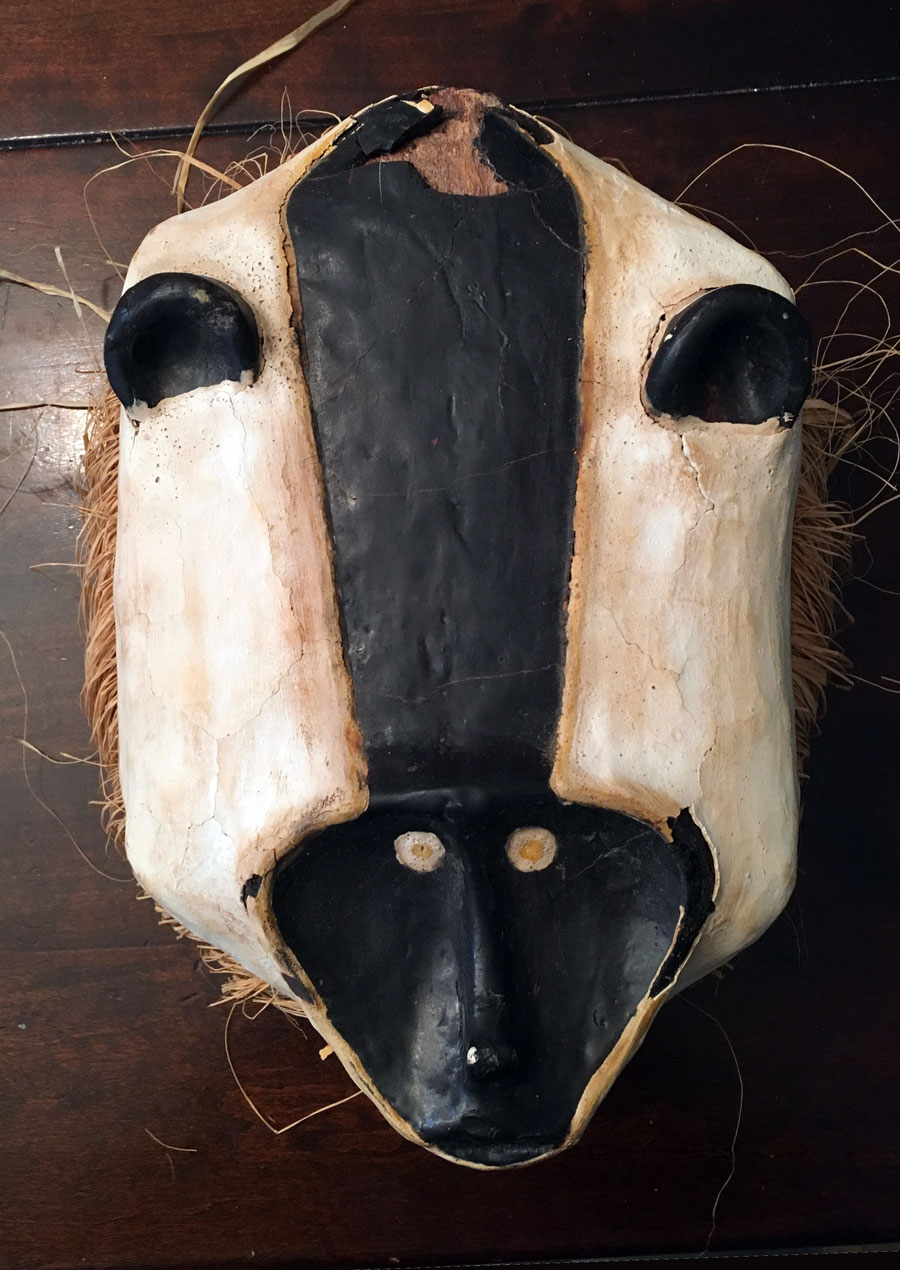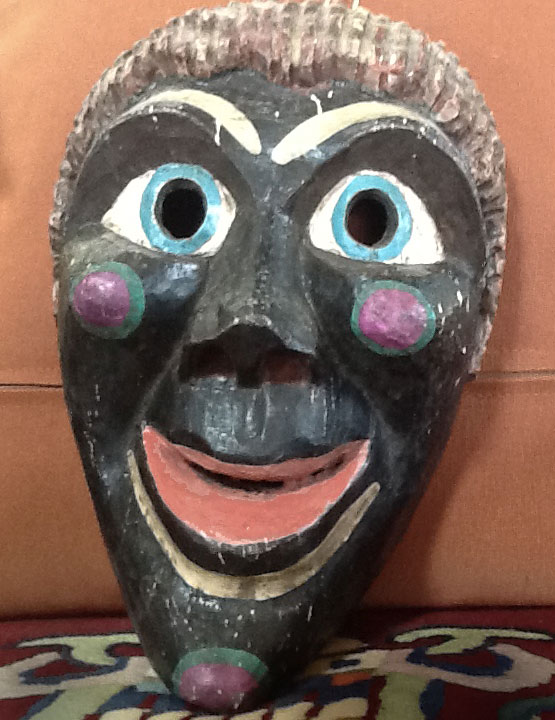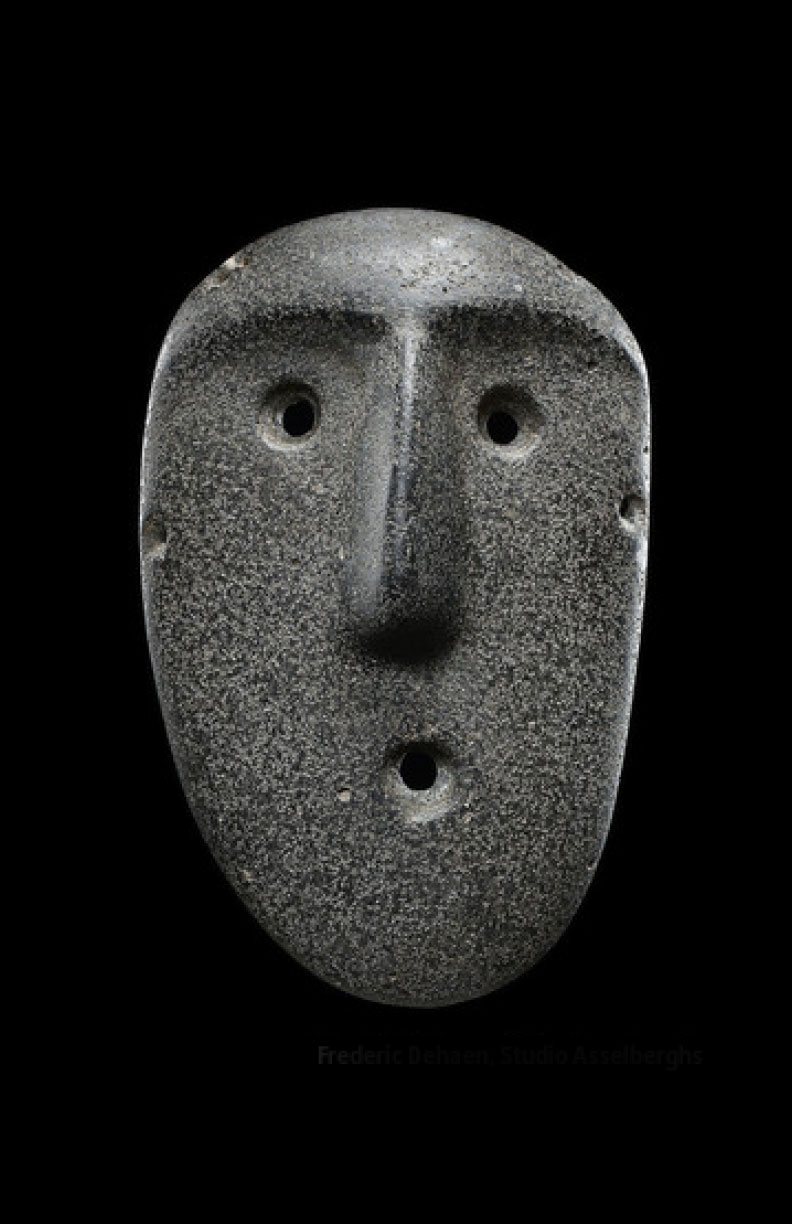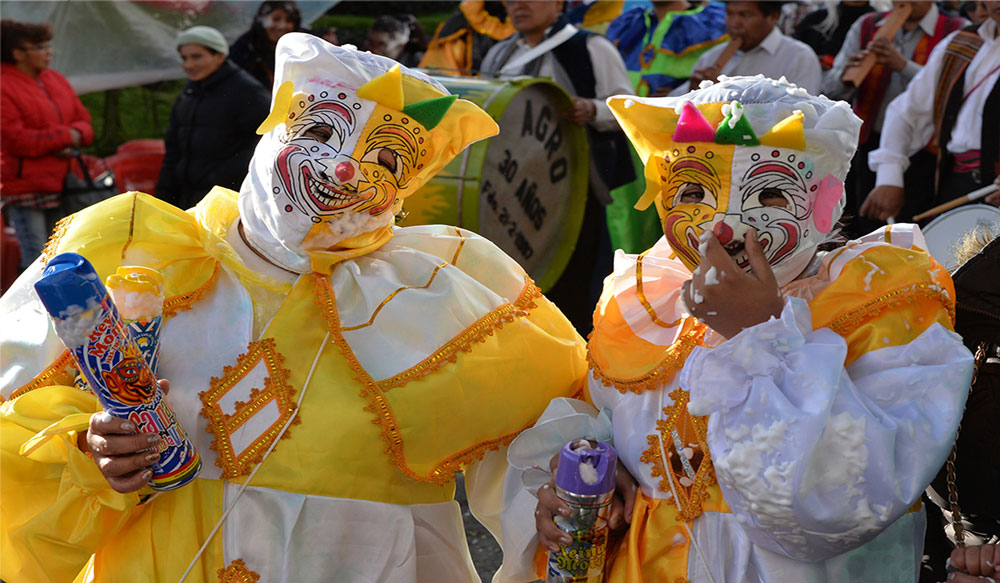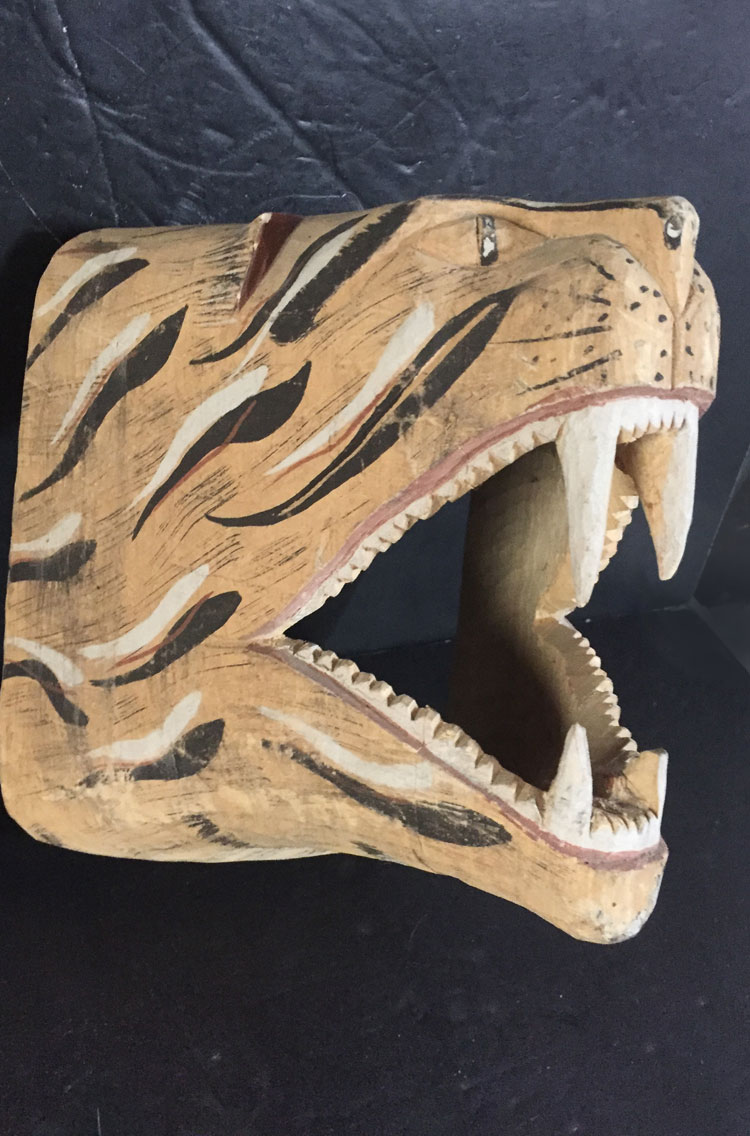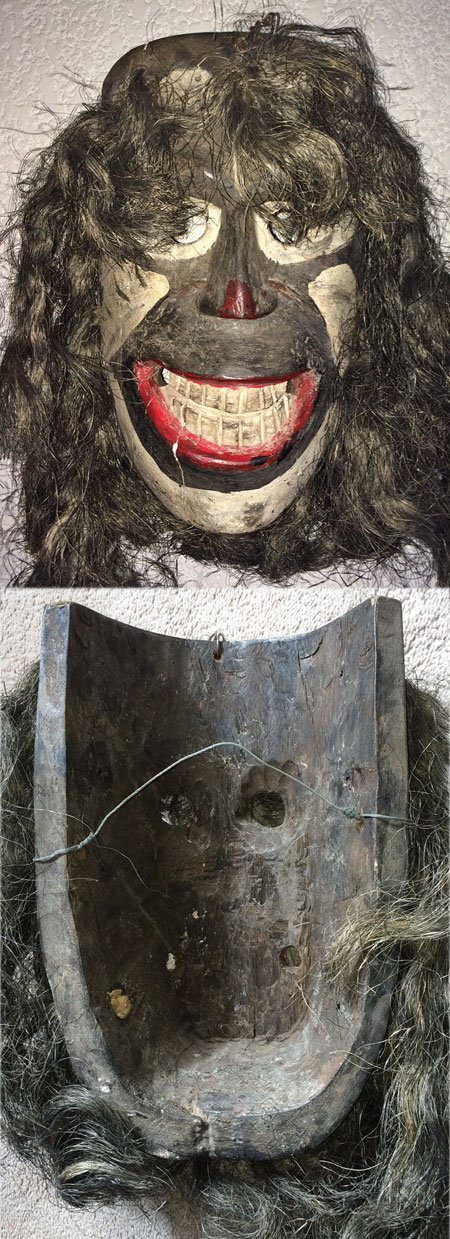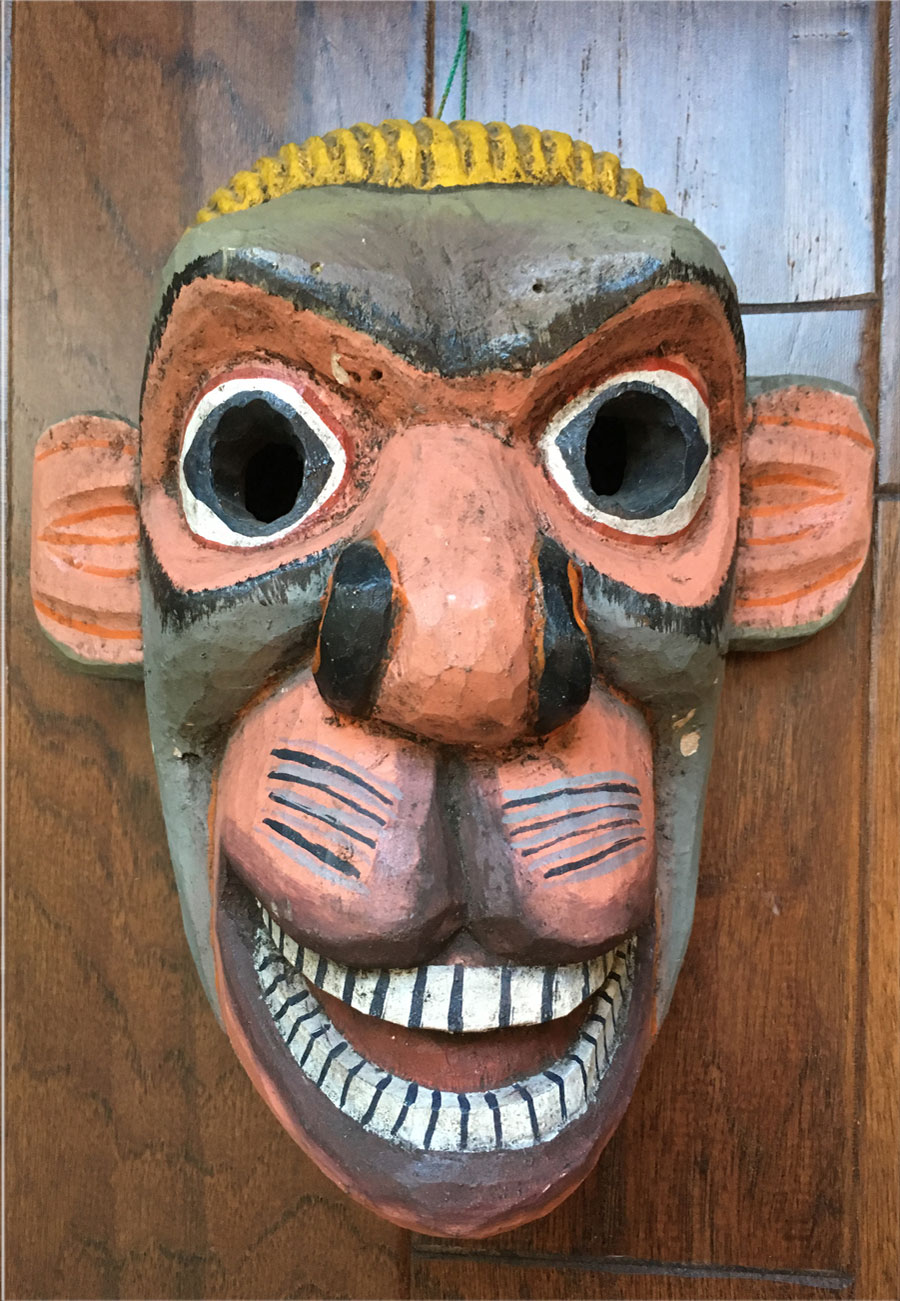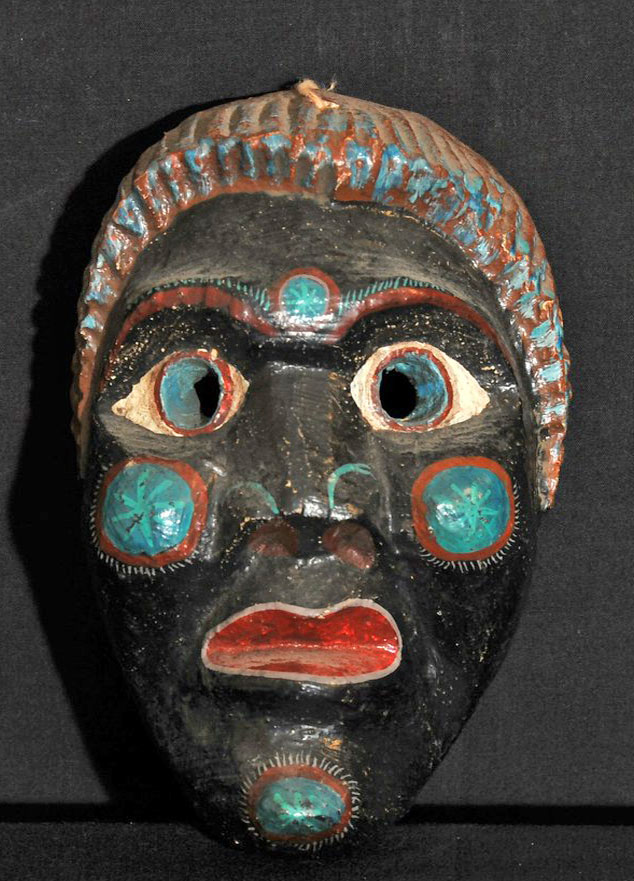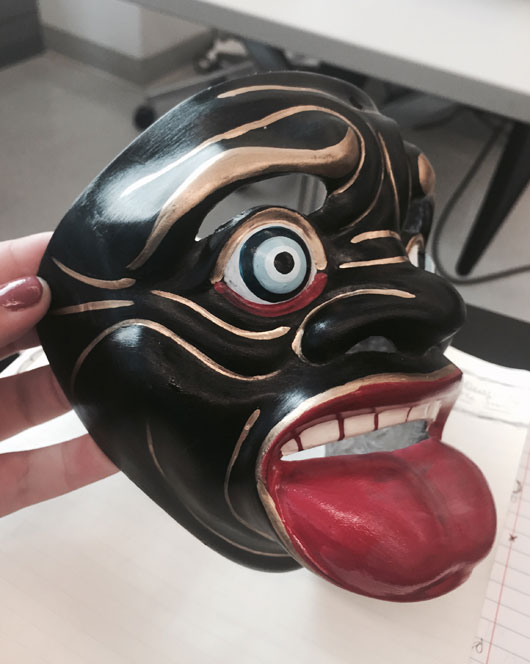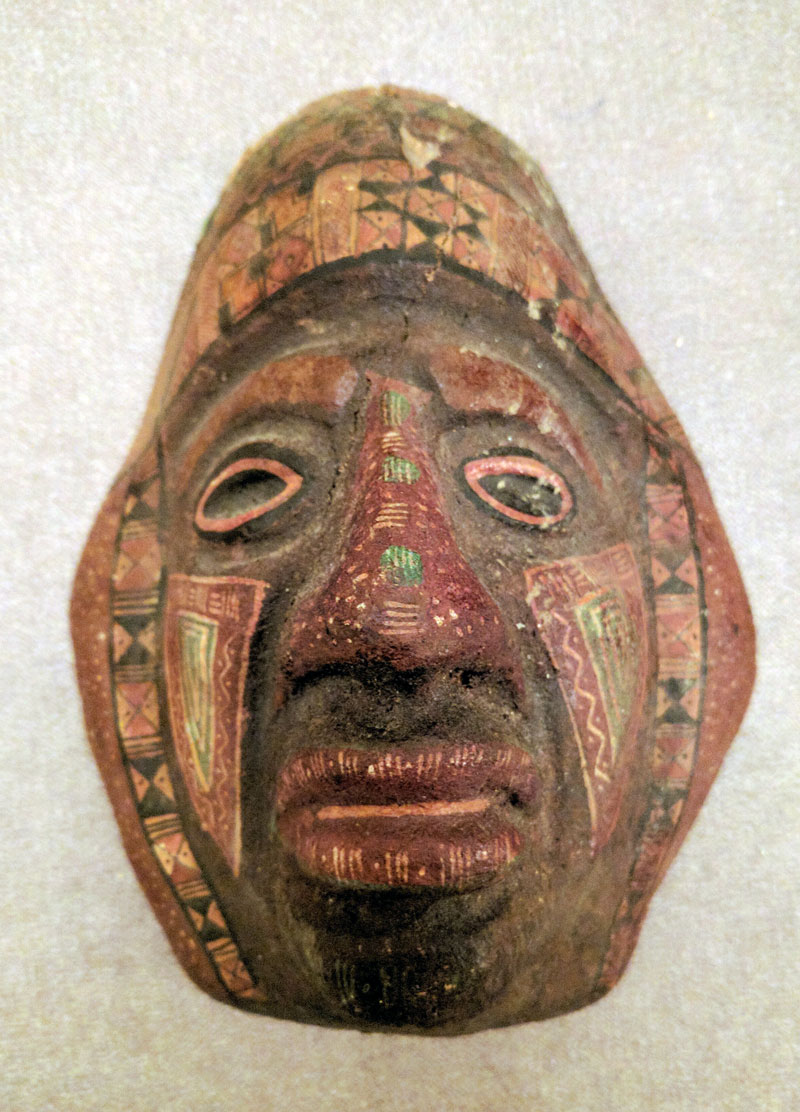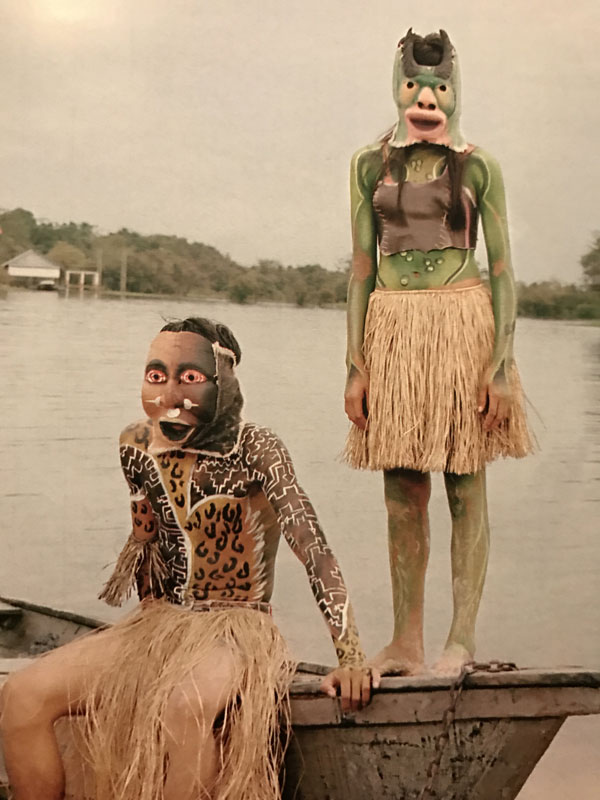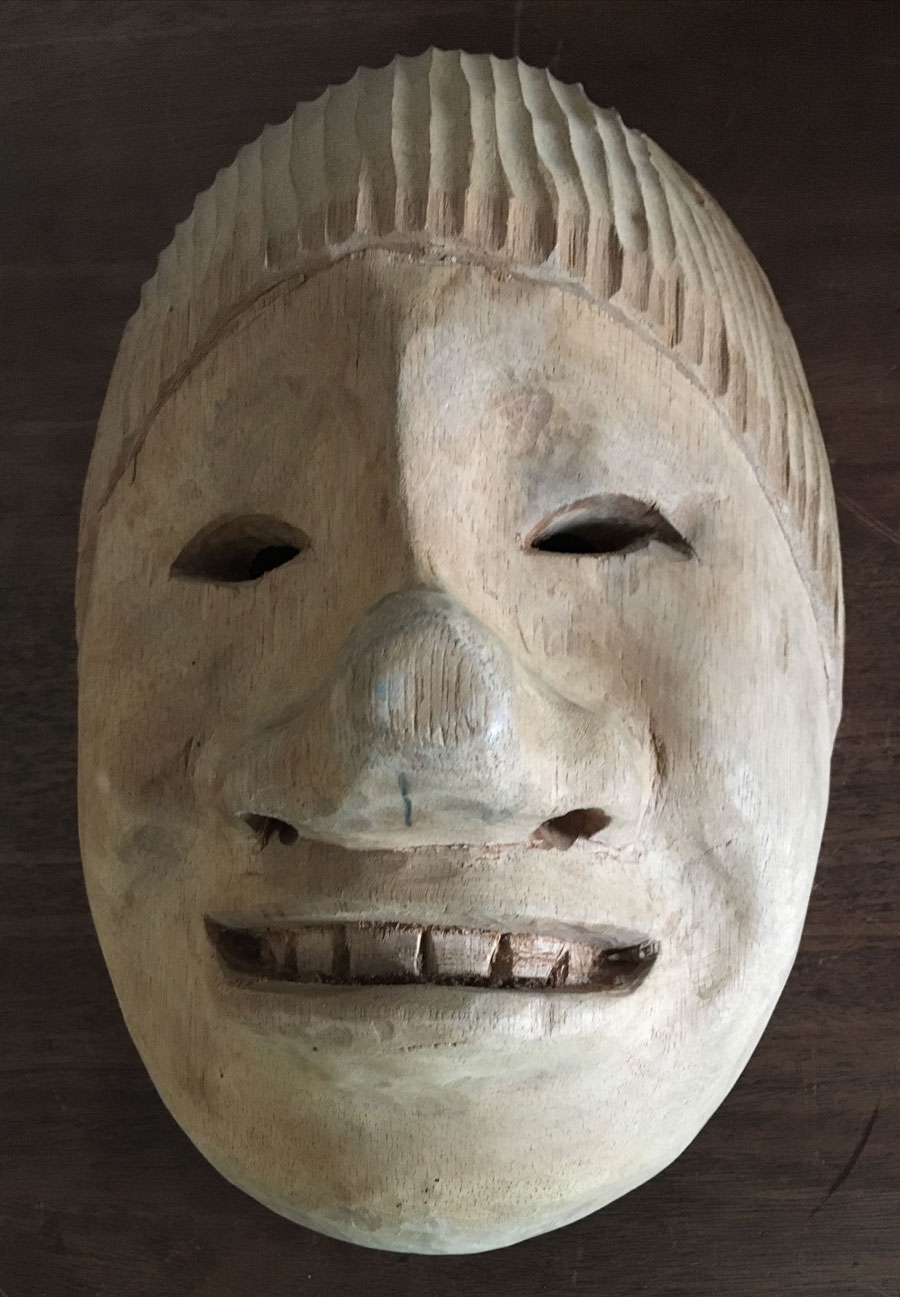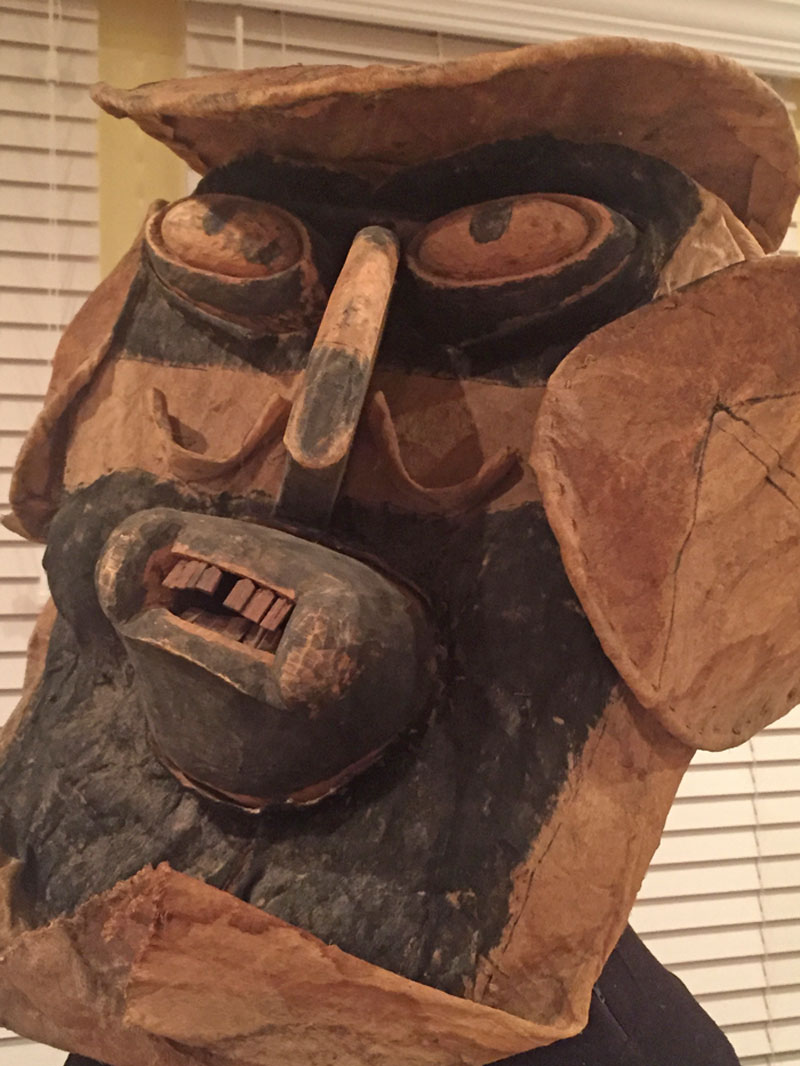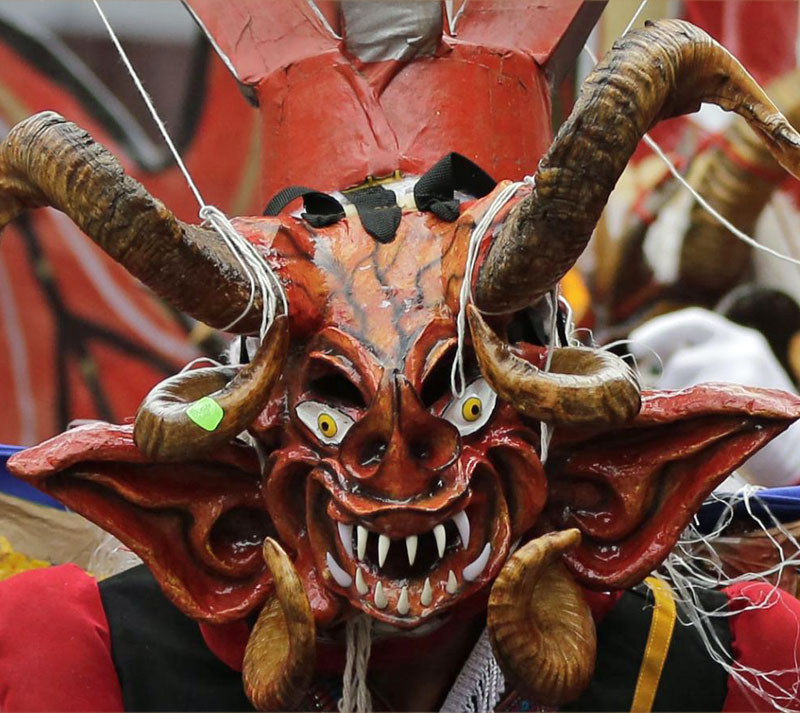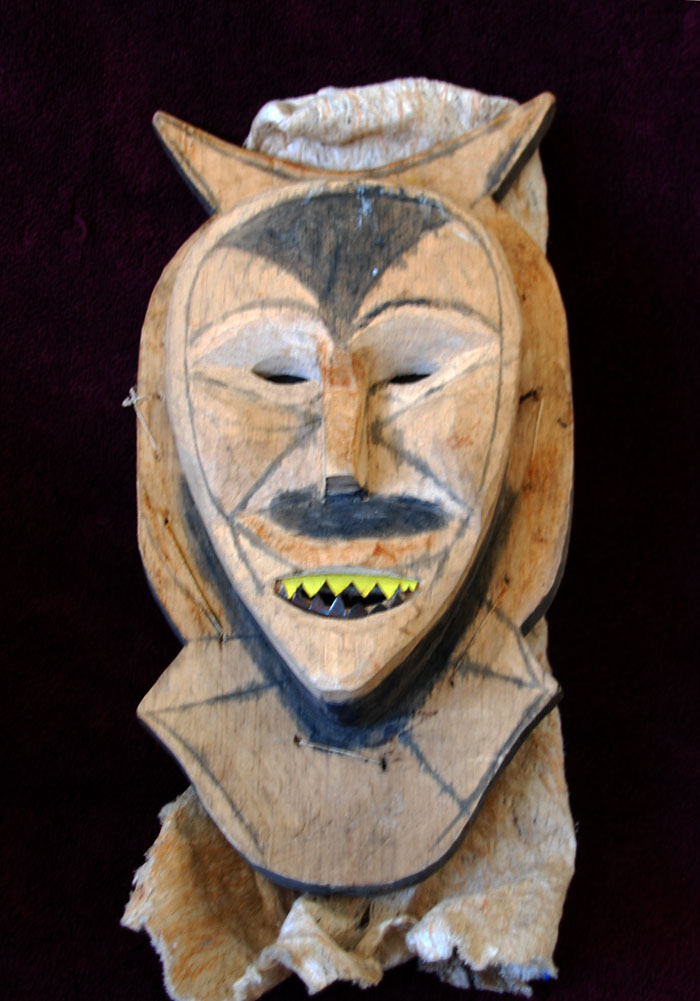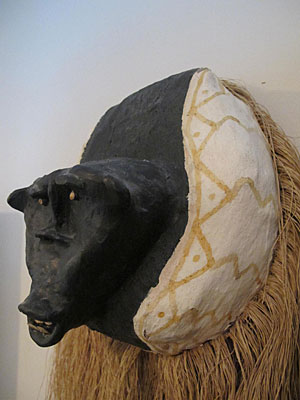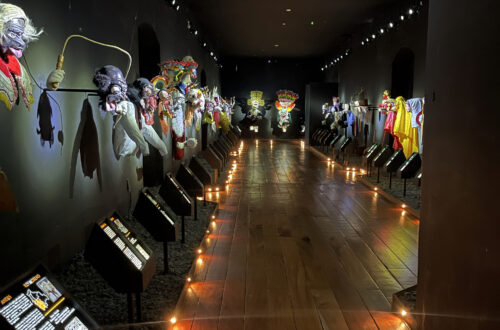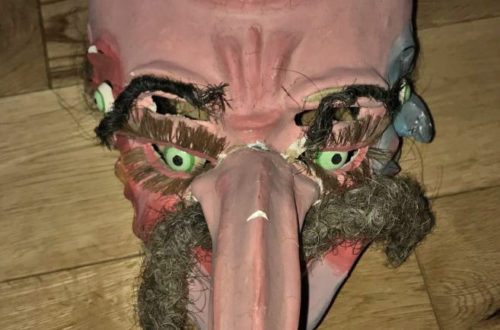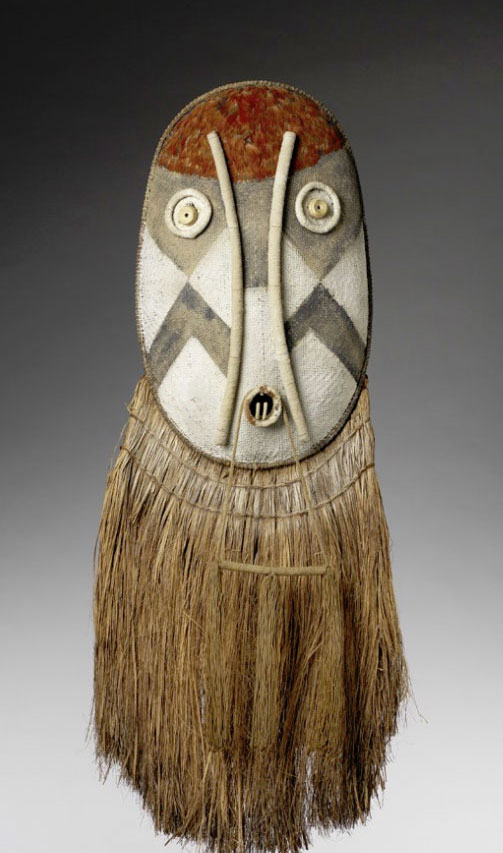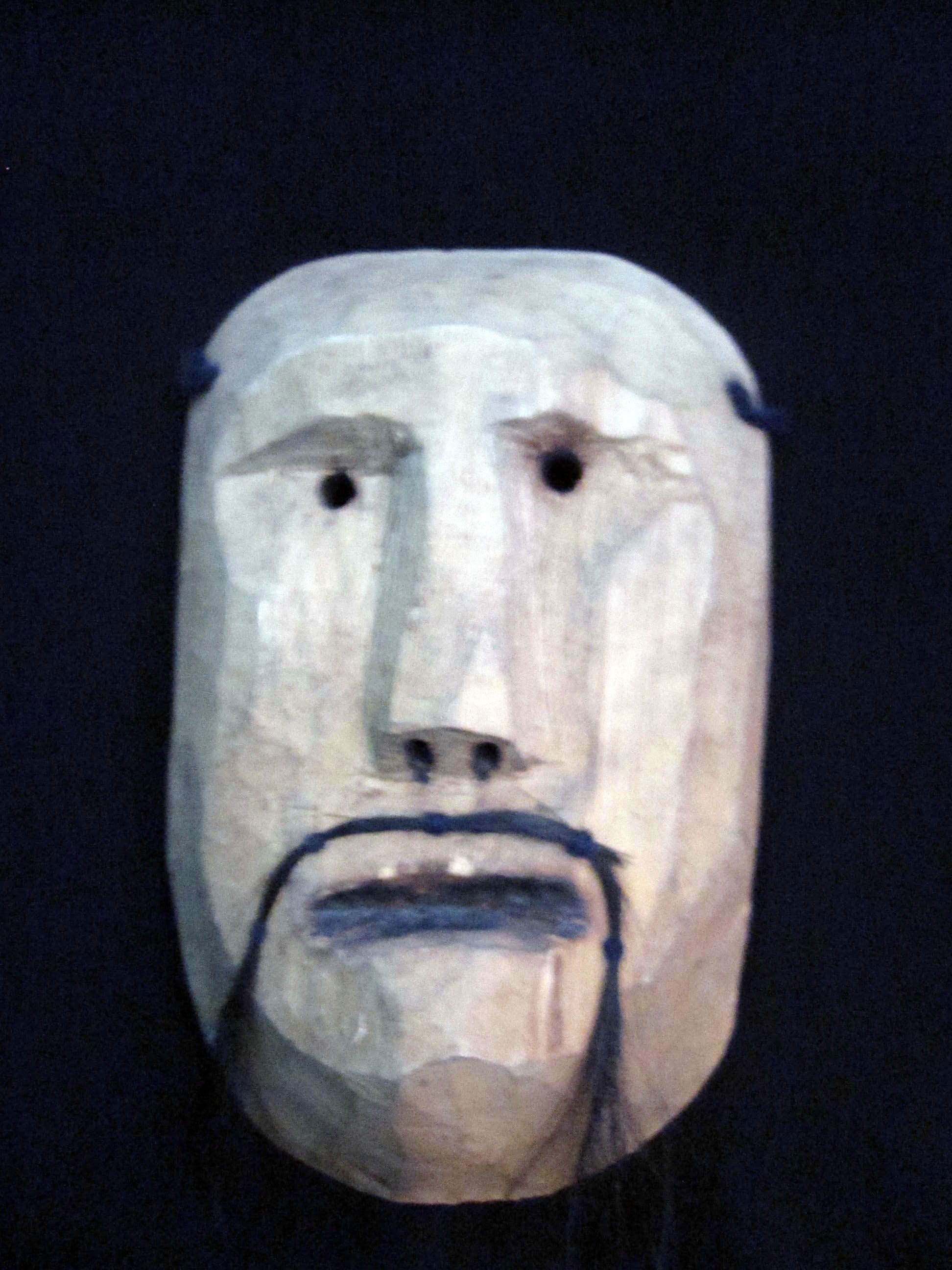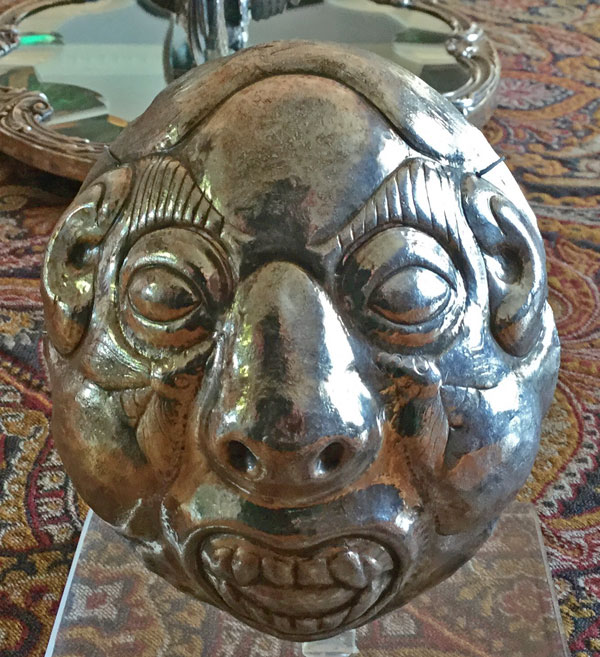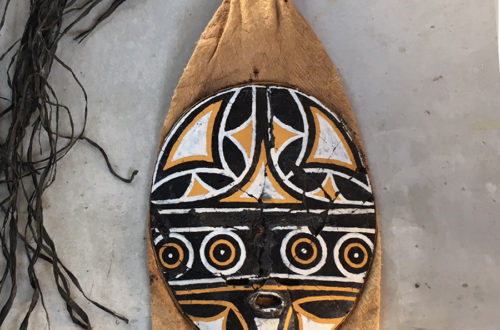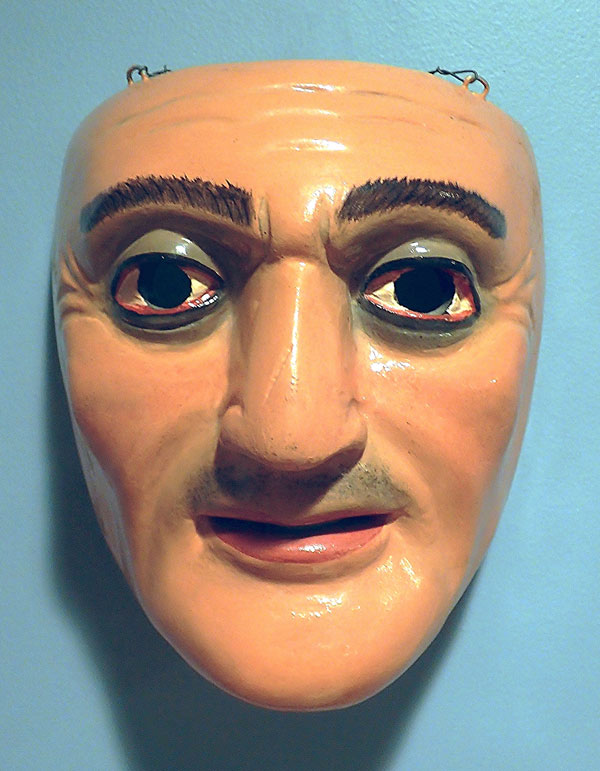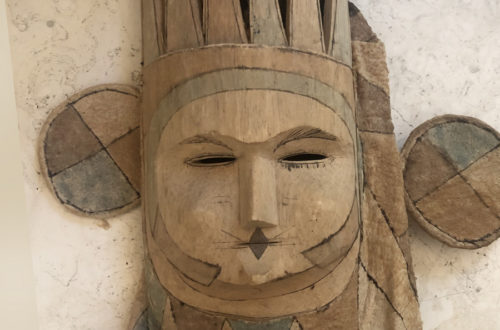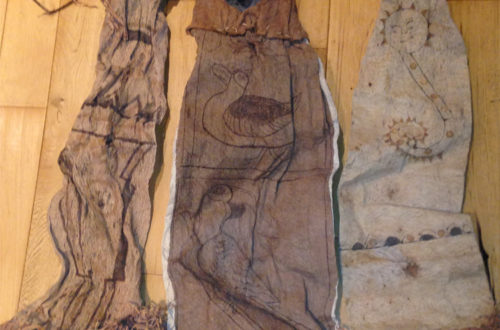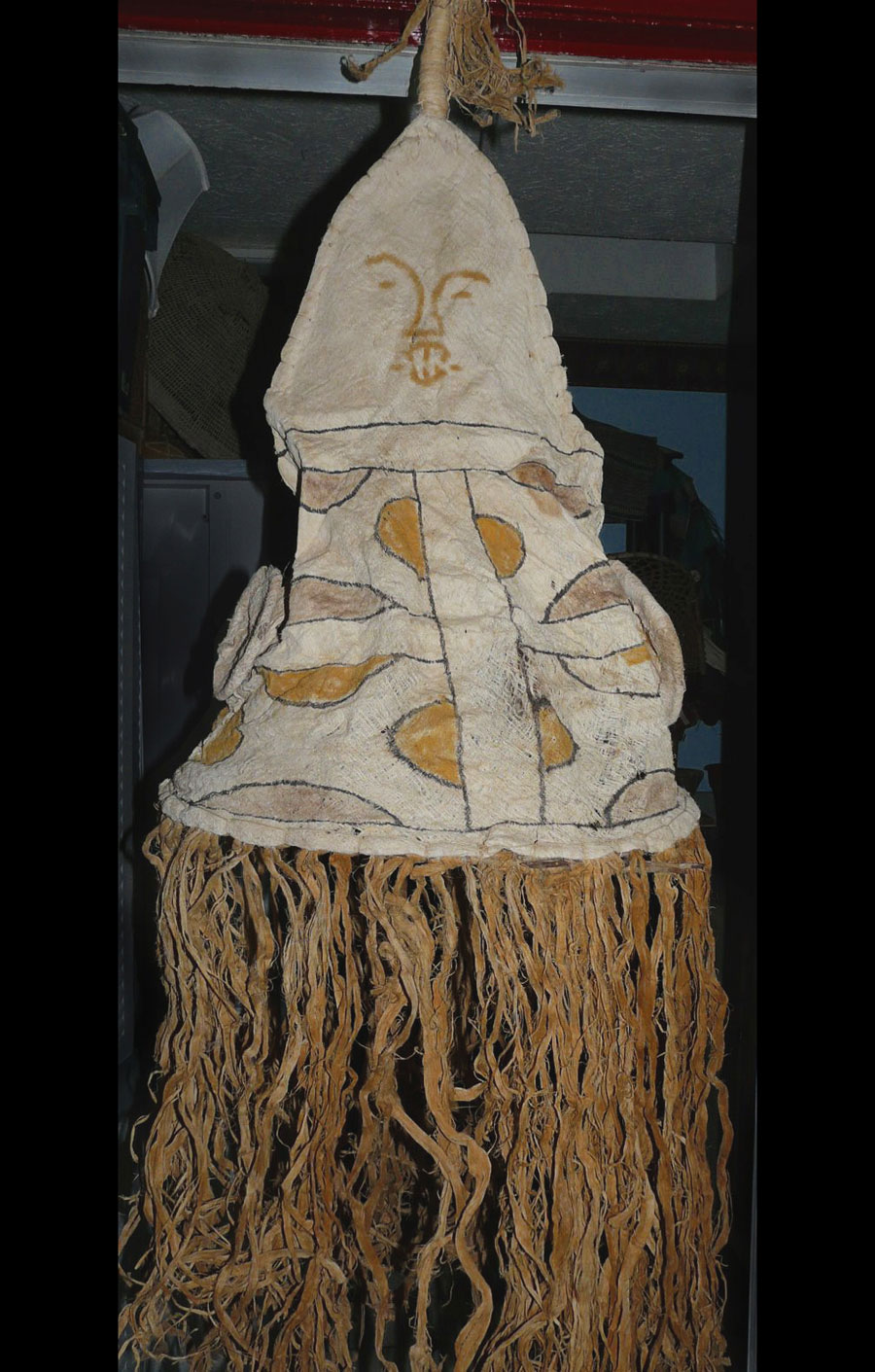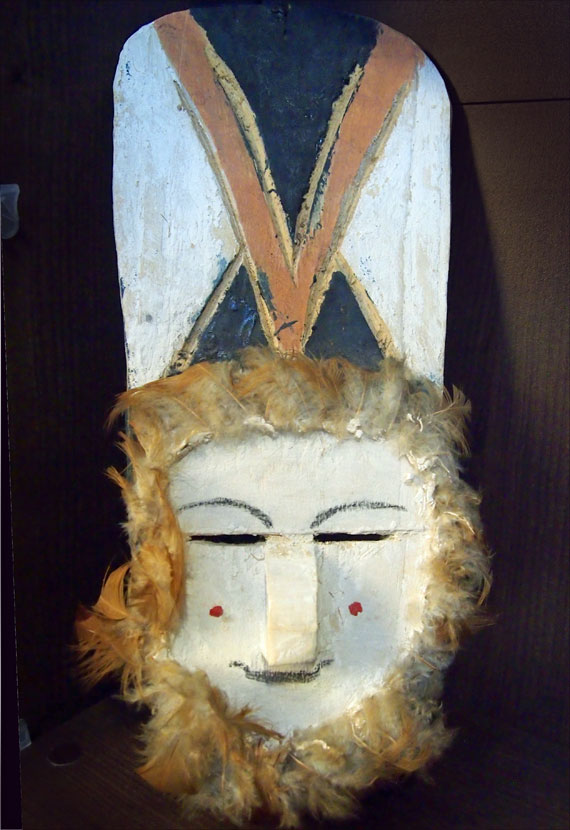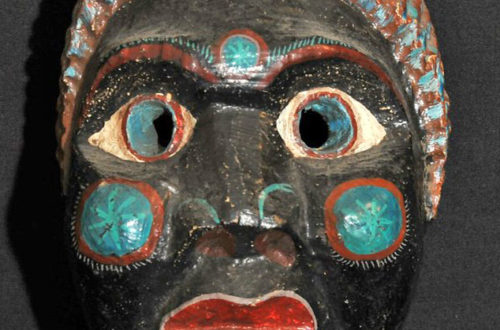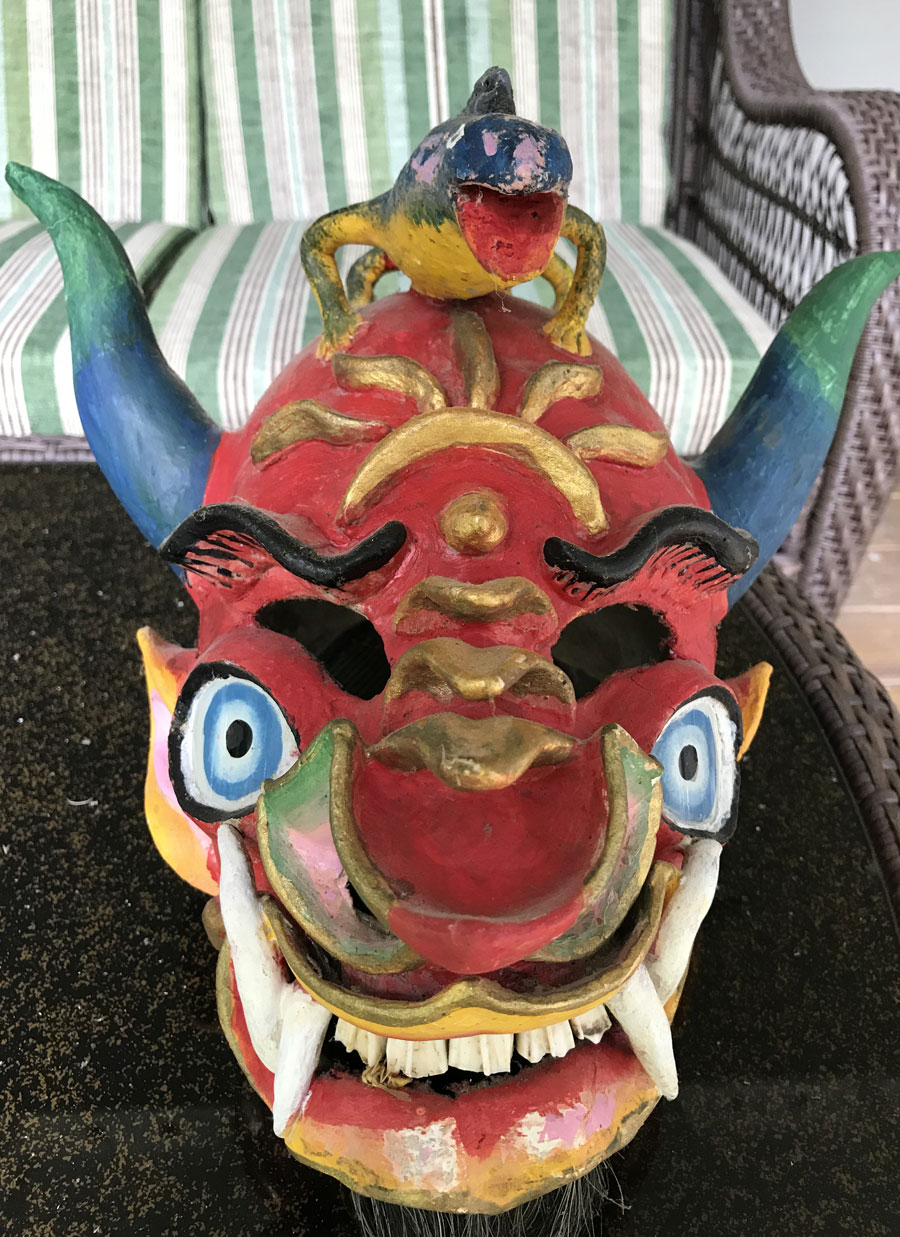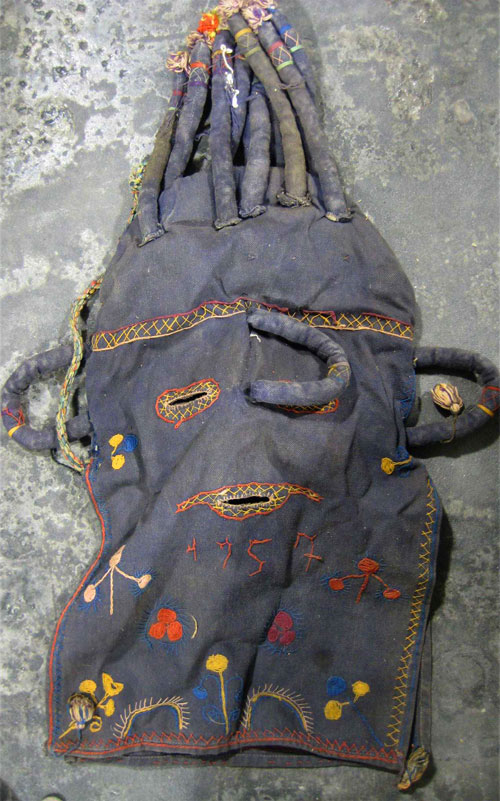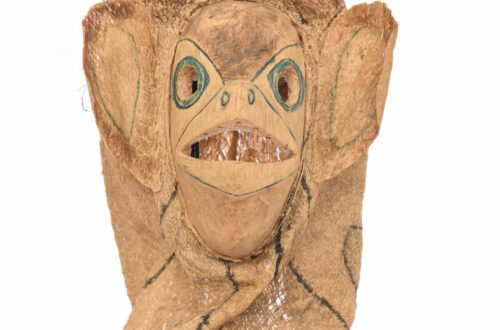Q: My wife and I picked up this mask while in Ciudad Bolivar. While flying in to see Angel Falls we bought lots of things (not the drug kit). Recently the mask flaked and I am trying to figure out what to do. We where told that the black paint is actually bee’s wax. We really are not going to sell the mask. Any ideas? Randy, 1594 A: Your photo represents some kind of wild animal indigenous to southern Colombia or Venezuela (maybe an owl monkey or skunk). The particular Amazon Indian tribe who dance this style of mask for religious purposes are called the Piaroa-Huarime. It is made of…
-
-
Metal monkey mask from Bolivia
Q: Bob, thought you might enjoy this Bolivian mask I picked up a while back for $90 online. It’s painted tin, as many of the Bolivian carnival masks are, but it’s an unusual monkey form that I’ve never seen before. Dan, 1570 A: Bolivian celebrations feature all kinds of masks. Probably the condor is their most common animal mask, and for almost 50 years of collecting I have seen others. Masks are an essential part of Bolivian celebrations, allowing dancers to adopt the personalities which populate the country’s myths and legends. Demons, dragons and angels join representations of real-world creatures like birds, bears and beavers. Most interesting are the masks…
-
Mama Negra mask from Ecuador
The Quechua-speaking people who live in the mountainous regions of Ecuador are enthusiastic users of masquerade. Their well carved and painted masks can be easily recognized because of round eye holes and heavy hardwood. There are many different dances and even more characters. Mama Negra is one of the most famous. This example appears to be old, used, and has more detail than most. Each year in November, the city of Latacunga, Ecuador celebrates Mama Negra, a figure of national fame. The festival and parade originated in 1742 when local residents turned to the Virgin of Merced to save them from a possible eruption of the nearby Cotopaxi Volcano. Today,…
-
South American Indian mask
Q: Appreciate any idea of value and tribe that hand-carved this mask. I believe it is from southern Colombia. I was told several years ago they were done by a rare tribe near the Amazon region but I don’t know if that’s true. Sally, 1524 A: I have seen very few of these masks. Back on March 31, 2017, I posted #1138, which is quite similar to Sally’s. It was my understanding that these unpainted carved-wooden mask probably came from a tribe below the southern border of the Amazon such as the Chaco, Guarani or other small cultures close to Northern Argentina. I wonder if they are painted for actual…
-
Amazon tribal mask
Q: I hope that this mask interests you. It was an eBay purchase for $50 a few months ago. Interestingly there are pieces of broken glass glued inside the eye holes. Also the teeth seem to be made from cut off pieces of a saw. The cape appears to have been made from beaten plant fiber. The seller was not sure where it came from. Steven, 1500 A: The Amazon rain forest is huge, taking up about half of the continent. There are still a number of indigenous Indians living in the remote areas, though many of the tribes have been killed or assimilated. Yes, I am very interested in…
-
Is this a Brazilian mask?
Q: I wondered if you might be able to assist with sourcing a 20th Century Kamayura mask? My client was hoping to purchase a mask that looks exactly like the attached which is currently on exhibition in the Montreal Museum. I wondered if you might have any insight as to who might sell these Brazilian masks or if you might know of anyone who would create a custom mask? Any feedback or help is much appreciated! Antonia, 1437 A: I know about the Kamayura Indians who live around the Xingu River in the Amazon region of Brazil. The mask shown here could be from them, but I haven’t seen anything…
-
This is a South American mask
Q: This mask was advertised on eBay as Mexican, but at 7 1/2″ wide & 11 1/2″ long, it is larger than most Mexican masks and made of a heavier wood. Maybe it’s a Latin American carnival mask or even an African mask. It fits the face perfectly but has no holes on the side to secure it to the face. I paid about $160. The paint looks vintage. Alicia, 1433 A: Your mask is from Ecuador. The hard wood and large, round eye holes make them easy to identify. It is made by the Quechua speaking Indians who live in the northern most parts of the Andes. This one…
-
Chilean Indian mask
Masks of various materials have been used by the Mapuche people for centuries. Numerous stone masks have been excavated from archaeological sites in and around Mapuche lands and can be presumed to be precursors to the Mapuche masks of wood and other materials made more recently. The stone pieces are believed to have been burial masks, but masks of wood, leather, and possibly silver are still used today in various ceremonial contexts. Small maskettes are sometimes employed by the machi in performing healing rituals. The Mapuche successfully resisted many attempts by the Inca Empire to subjugate them, despite the lack of nationwide organization. They fought against the Spaniards for over…
-
Kobeua Indian body mask from Amazon
Here is one of my favorite masks from the huge Amazon basin. It is old and used, but you can still find newer ones that are more colorful and have arms that are longer and more colorful. Made of bark cloth and raffia, they are meant to cover the full body. This costume plays an important role in the Kobeua’s initiation ceremony. Indians were among the first to come into contact with the European colonists when they landed in Brazil in 1500. The indigenous population was largely killed by European diseases, declining from a pre-Columbian high of millions to some 300,000 grouped into 200 tribes. However, the number could be…
-
Ecuadorian monkey mask
Q: Thanks so much for the write up about my mask. I don’t know anything about this subject, so it is so cool to learn more about it! Here are the attached photos of the other two masks I found at Goodwill. One looks like an elephant and isn’t nearly as detailed as the other. The other one looks to me like a monkey, and now that I am looking at it I think it might be some sort of plaster, not wood. Kelley, 1395 A: I don’t normally do a second mask from the same person. Summer is slow and this monkey mask is nicely done in a traditional…
